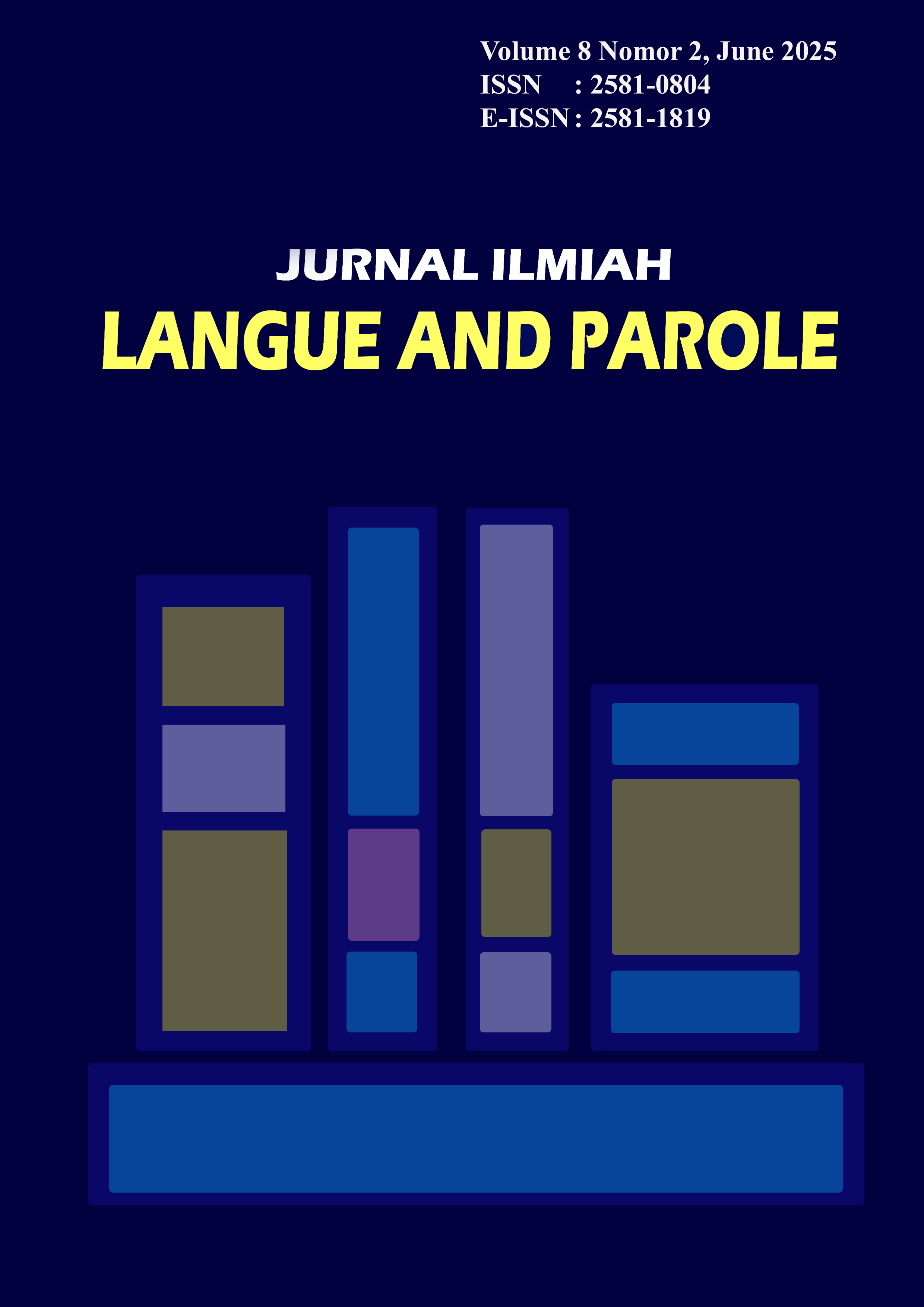The Traditional Anak Daro Clothes Of Salayo, Solok District West Sumatera:A Semiotic Analysis
DOI:
https://doi.org/10.36057/jilp.v8i2.721Keywords:
Minangkabau, Anak daro, Salayo, Semiotics analysis, SaussureAbstract
The purpose of this study is to reveal the meaning and signs of clothes worn by anak daro and introduce and preserve Minangkabau culture, especially in traditional wedding clothes in Nagari Salayo, Solok District. This research resulted in the meaning of the signs on the clothes and attributes worn by the bride during the wedding party. These meanings are categorized into 3 parts. These meanings are categorized into 3 parts. First, it reflects the state of flora and fauna in the surrounding nature, such as bungo sanggua banana saparak, dukuah rago, dukuah ramo-ramo, tali baju, tabua, galang munggu, galang leaves. Second, the Salayo community does not forget the rules of custom and religion, this can be seen in the attributes of dukuah pinyaram. The symbolic meaning of the marriage symbols as a whole is a form of respect, while the symbolic meaning contained in the traditional clothes of the Salayo children is a form of responsibility and life lived during marriage.The method used in this research is descriptive qualitative research method. The main data collection techniques in qualitative research are observation, in-depth interviews, and supplemented by documentation studies. The data analysis technique is to explain the clothing attributes and interpret each sign on the attributes using the theory proposed by Ferdinand de Saussure, namely Semiotics.
Downloads
References
[1]Barthes (2023). The semiotic traditionexplores the study of signs and symbols as a significant part of communications.
[2]Chandler, Daniel. , Wayan Swardhani, (2007). Semiotics the basics second Editation, . Published in the USA and Canada By Routledge
[3]Chirstomy and Tomy, (2005). Kajian Teori Semiotika oleh Ferdinand De Saussure. Jurnal of USM Science in Semarang.
[4]Chandler, Daniel. (2007). Signified and Signifier Image in Saussure Model, Review of Semiotics, The Basics. Honours Project, Callum Fowlie, 1202211.
[5]Fanan, Fajriaanoor (2013). Semiotic Structualisme Saussure, Jurnal the Messenger Cultural Studies, IMC and Media P-ISSN: 2086-1559, Vol.5 No.1
[6]Hartono, Dick. Rahmanto, B. (1986). Pemandu Dunia Sastra. Yogyakarta.
[7]Lustyantie, Ninuk. (2012). Pendekatan Semiotik Model Roland Barthes dalam Karya Sastra Prancis. Penelitian and Artikel Dosen Fakultas Bahasa and Seni, Jakarta State University.
[8]Hartono, Dick. Rahmanto, B. (1986). Pemandu Dunia Sastra. Yogyakarta.
[9]Saussure, Ferdinand de. (1974). Course in General Linguistics. London: Collins.
[10]Sugiyono (2013). Educational reseach methods with quantitative, qualitative and R&D approaches.
[11]Kusnandar, Viva Budi. (2022). Direktorat Jendral Kependudukan Sipil. Kadata Media Work.
[12]Kanduang, Bundo. Mamak, Niniak. ,Seksi Pembinaan dan Pengembangan Adat Istiadat Kerapatan Adat Nagari Salayo. ,Buku panduan adat istiadat nagari salayo. , Bandung Sains dan teknologi.
[13]Vera, Nawroh. Sobur, Alex (2014). Semiotika dan Aplikasi pada Karya Sastra , IKIP PGRI Semarang.
[14]Zhabotynska, (2013). Teori tanda linguistic Saussure: perspektif kognitif. Dalam kongres linguistic internasional.
[15]Zaimar, Okke K.S. (2008). Semiotics and its Application in Literature. Departemen Pendidikan Nasional, Jakarta.
Downloads
Published
How to Cite
Issue
Section
License
Copyright (c) 2025 Jurnal Ilmiah Langue and Parole

This work is licensed under a Creative Commons Attribution-NonCommercial-ShareAlike 4.0 International License.








